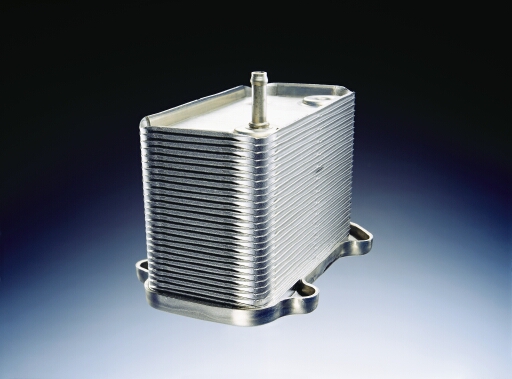Cooling (engine cooling)
In a combustion engine, the bulk of the energy contained in the fuel is converted into heat. If this heat is not effectively dissipated to the outside, the engine overheats and serious damage is caused to the engine mechanics.
Function
In a combustion engine, the bulk of the energy contained in the fuel is converted into heat. If this heat is not effectively dissipated to the outside, the engine overheats and serious damage is caused to the engine mechanics. The engine cooling system must therefore cool the engine by dissipating excess heat to the outside air. Some of the heat transported by the cooling system can be used to heat the passenger compartment if required.
into heat. If this heat is not effectively dissipated to the outside, the engine overheats and serious damage is caused to the engine mechanics. The engine cooling system must therefore cool the engine by dissipating excess heat to the outside air. Some of the heat transported by the cooling system can be used to heat the passenger compartment if required.
Processes of the cooling system
The combustion heat from the fuel first travels to the components of the engine before being released to the coolant. The heat is transported to the radiator by means of the circulation of the coolant. Having reached the radiator, it is discharged to the outside air. The cooling process of the coolant is assisted by one or more fans (driven mechanically or electrically) which can be located upstream or downstream of the radiator.
This occurs in particular when the vehicle is travelling slowly or at standstill with the engine running. To shorten the warm-up phase of the engine and keep the temperature of the coolant and the engine relatively constant, the coolant flow is controlled by a thermostat.
Components of the cooling system
The most important components of the cooling system are the
- water pump
- thermostat
- radiator
- expansion tank.
Some of the individual components of the cooling circuit are installed in the engine block and interconnected via hose lines to form an enclosed system. The coolant circulates inside the system driven by a mechanical or electrical pump.
The combustion heat from the fuel first travels to the components of the engine before being released to the coolant. The heat is transported to the radiator by means of the circulation of the coolant. Having reached the radiator, it is discharged to the outside air. The cooling process of the coolant is assisted by one or more fans (driven mechanically or electrically) which can be located upstream or downstream of the radiator. This occurs in particular when the vehicle is travelling slowly or at standstill with the engine running. To shorten the warm-up phase of the engine and keep the temperature of the coolant and the engine relatively constant, the coolant flow is controlled by a thermostat.
Environmental protection
Numerous solutions involving the use of effective heat transfer to have a positive impact on
- fuel consumption
- emissions
- ride comfort and
- road safety
have been developed for modern cars.
For minimum emissions, the engine must reach its operating temperature very quickly and maintain this temperature for the entire duration of operation. The cooling system makes a significant contribution here to creating the ideal conditions for efficient combustion with low levels of harmful substances.
Depreciation
To ensure that the cooling system functions reliably through the service life of the vehicle, compliance with the maintenance intervals prescribed by the vehicle manufacturer is mandatory. The cooling system is inspected as part of service and maintenance work. Specialists in garages test the antifreeze content of the coolant and check all system components for leaks and damage.
If the coolant level is too low, this suggests that there is a leak in the cooling system. To avoid damaging the engine and other components, a leak in the cooling system should be rectified by a garage as soon as possible. If radiator antifreeze needs to be topped up, the product used must conform to the vehicle manufacturer's specification. Using the wrong coolant can damage cooling system components due to material incompatibilities.
Safety
An intact engine cooling system ensures the safe function of the engine regardless of operating conditions and weather conditions. Breakdowns due to the engine overheating and expensive repairs are thus avoided. A cooling system that is in perfect working order is also needed for heating the interior quickly. Misted-up and iced-over windows are avoided so that even in poor weather conditions, good visibility and high levels of safety are assured.







